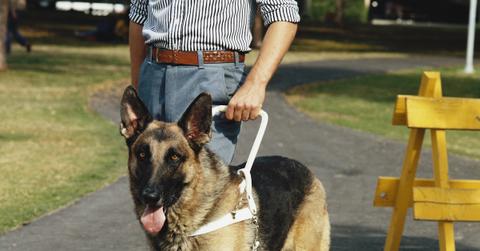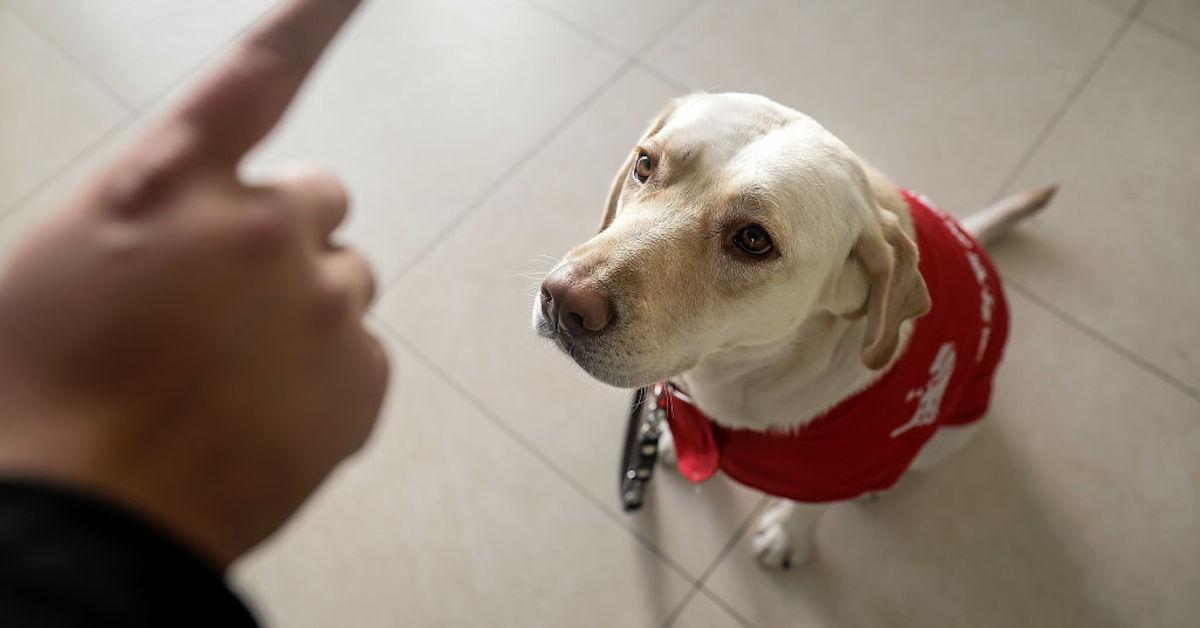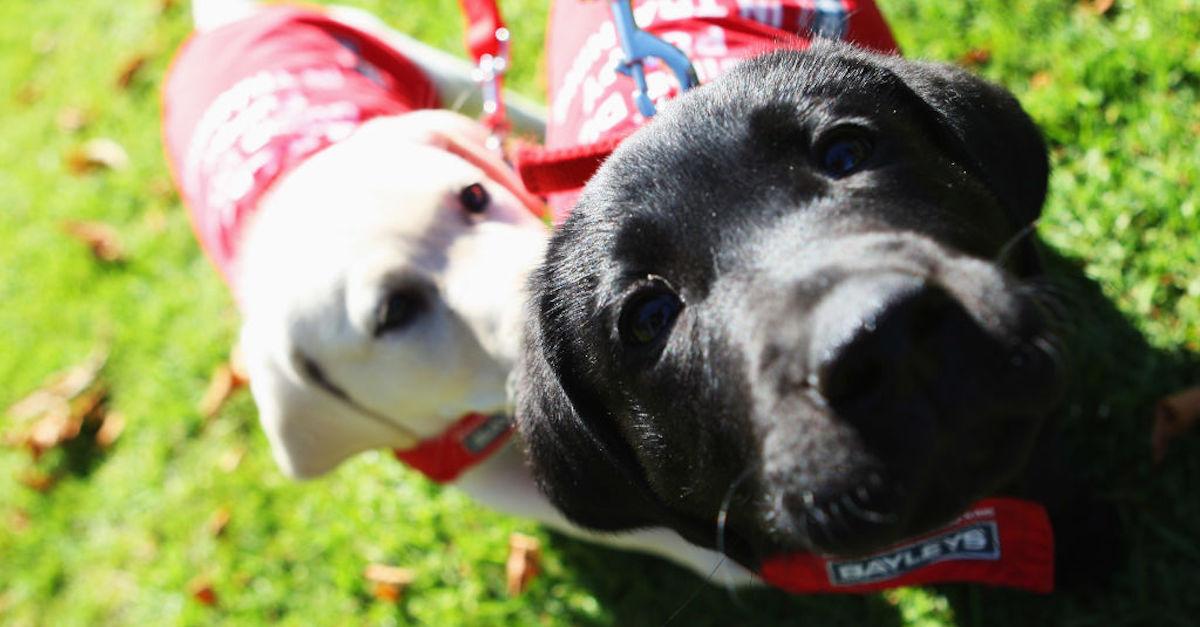International Guide Dog Day: How to Adopt Pups Rejected From Training
Published April 28 2021, 1:57 p.m. ET

Wednesday, April 28 is International Guide Dog Day, commemorating the good pups who help so many people across the globe every year. There are many different types of working dogs who dedicate their lives to helping and serving their humans, but being a guide dog requires rigorous training and specific certifications — and obtaining them can be difficult and tumultuous process, depending on the individual pup.
That said, we're delving into what differentiates a guide dog from a service dog, what types of dogs can be guide dogs, and how you can adopt guide dogs who don't pass the certification test.

What is a guide dog versus a service dog?
A guide dog is a type of service dog who is trained to help people with visual impairments, according to Pet Insurance. From a young age, puppies are taken in by volunteers who train them for about a year before they transition to advanced training for about 4 to 6 months. Then, they will be required to pass some tests, before working with a handler. Once fully trained, guide dogs can guide their handlers steadily — ignoring distractions, stopping at curbs, and obeying other verbal commands.
Service dogs, on the other hand, are often trained to help those with hearing loss, according to the United States Department of Federal Affairs. They can also help people with physical disabilities by opening doors, pulling wheelchairs, or retrieving things. Both guide and service dogs are generally allowed in public places, though not all service dogs are considered guide dogs, according to Pet Finder. And, more importantly, none of them are considered "pets."
An Emotional Support Animal, or ESA, is entirely different. Requiring much less rigorous training, ESAs are pets that provide support through companionship, according to American Kennel Club. They help calm anxiety, ease depression, and mitigate certain fears. That said, though, they are not considered service dogs, and aren't given the same accommodations as those who use service dogs. However, you should never approach or distract a guide dog, service dog, or ESA.

Can any dog be a guide dog?
Although any dog who is able to endure guide dog training and pass the required tests could hypothetically work as a guide dog, certain breeds are more fit for service. As per Pet Insurance, Golden Retrievers, Labrador Retrievers, German Shepherds, and other larger breeds are usually the best type of guide dog. Their large size allows them to lead and protect their owners from dangerous situations.
But, a purebred dog isn't required. According to VCA Hospitals, Golden Retriever-Labrador mixes are popular crossbreeds, and anything mixed with Standard Poodles tend to shed less than other breeds. They are also hypoallergenic, if you or a loved one has allergies or sensitivities to dander.

Can you adopt dogs rejected from guide training?
Whether a dog fails their guide dog training for health reasons or for its behavior, they will have gone through a certain amount of training — and therefore will make for a relatively well-behaved pet. Several national organizations put up guide dog failures, aka career change dogs, such as Service Dogs Inc., Freedom Service Dogs of America, Guide Dogs for the Blind, and Guide Dogs of America, according to The Spruce.
Adoption prices can be high for career-change pups, sometimes costing up to $1,000 because of high demand and prior training. It can sometimes take months, though it might be worth it if you're looking for that truly "good boy." Training a guide dog is also a demanding job (and sad when it's over!) but worth it if it's something you're interested in doing. Guide Dog Foundation is always looking for volunteers and so is Guiding Eyes — it's a great cause, if you're capable of doing so.